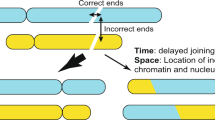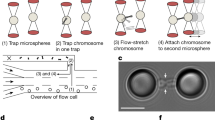Abstract
IN a useful article which appeared under this title recently1 H. L. K. W. says at one stage: “Nothing is known about the mechanism of chromosome pairing at the molecular level, but Watson and Crick (Nature, 171, 964; 1953) suggested that it involved the pairing of complementary nucleotide chains to form a double helix. There seems to be no alternative to this account for the specificity of pairing, and a more detailed hypothesis along these lines has been proposed by Sobell (Proc. US Nat. Acad. Sci., 69, 2483; 1972)”.
This is a preview of subscription content, access via your institution
Access options
Subscribe to this journal
Receive 51 print issues and online access
$199.00 per year
only $3.90 per issue
Buy this article
- Purchase on SpringerLink
- Instant access to full article PDF
Prices may be subject to local taxes which are calculated during checkout
Similar content being viewed by others
References
H. L. K. W., Nature, 240, 126 (1972).
McGavin, S., J. Mol. Biol., 55, 293 (1971).
McGavin, S., Proc. First European Biophysics Congress, E, 2/6, 259 (1971).
Author information
Authors and Affiliations
Rights and permissions
About this article
Cite this article
MCGAVIN, S. Chromosome Pairing. Nature 242, 330 (1973). https://doi.org/10.1038/242330a0
Received:
Issue date:
DOI: https://doi.org/10.1038/242330a0



